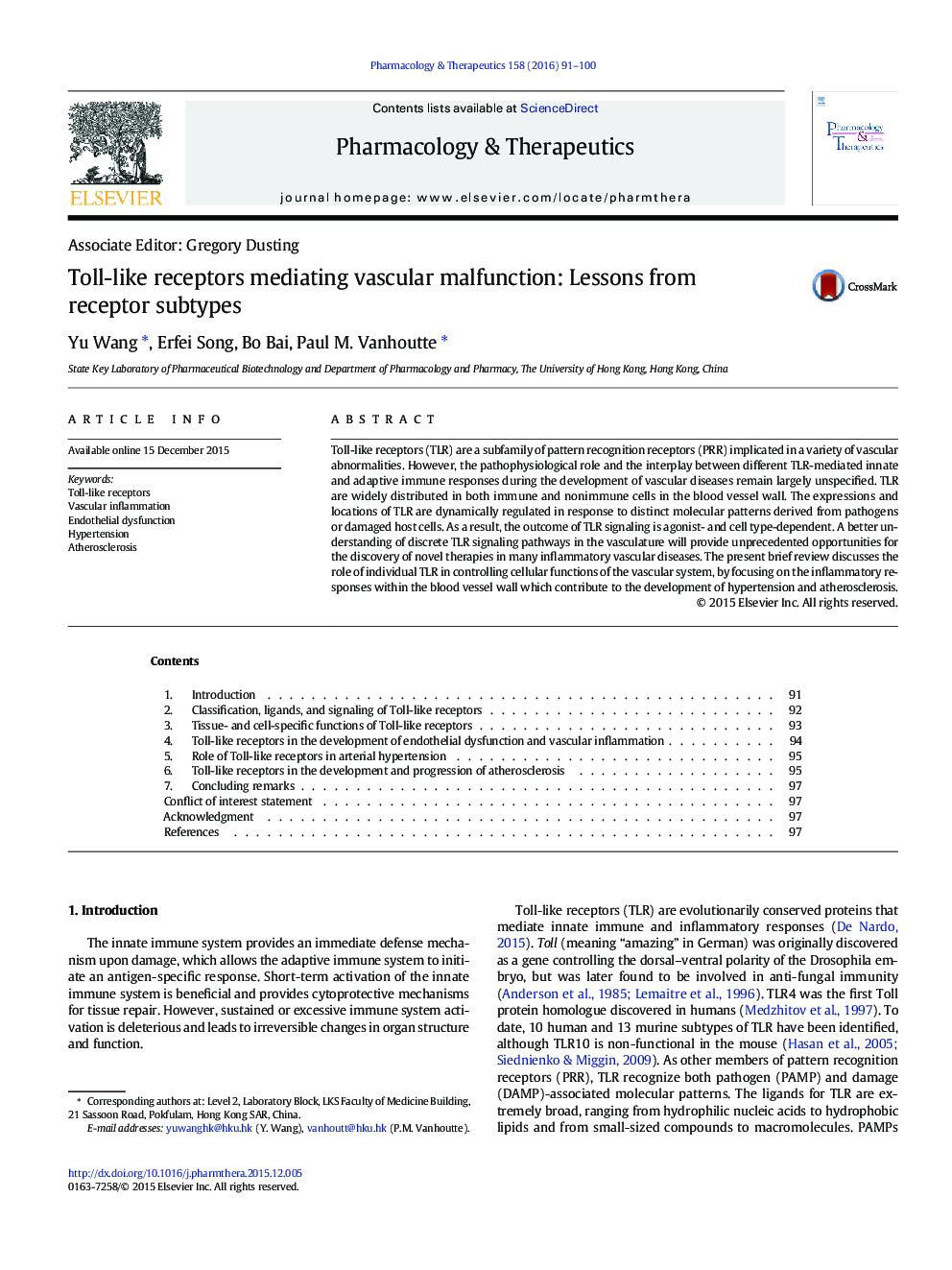| Article ID | Journal | Published Year | Pages | File Type |
|---|---|---|---|---|
| 2563118 | Pharmacology & Therapeutics | 2016 | 10 Pages |
Toll-like receptors (TLR) are a subfamily of pattern recognition receptors (PRR) implicated in a variety of vascular abnormalities. However, the pathophysiological role and the interplay between different TLR-mediated innate and adaptive immune responses during the development of vascular diseases remain largely unspecified. TLR are widely distributed in both immune and nonimmune cells in the blood vessel wall. The expressions and locations of TLR are dynamically regulated in response to distinct molecular patterns derived from pathogens or damaged host cells. As a result, the outcome of TLR signaling is agonist- and cell type-dependent. A better understanding of discrete TLR signaling pathways in the vasculature will provide unprecedented opportunities for the discovery of novel therapies in many inflammatory vascular diseases. The present brief review discusses the role of individual TLR in controlling cellular functions of the vascular system, by focusing on the inflammatory responses within the blood vessel wall which contribute to the development of hypertension and atherosclerosis.
